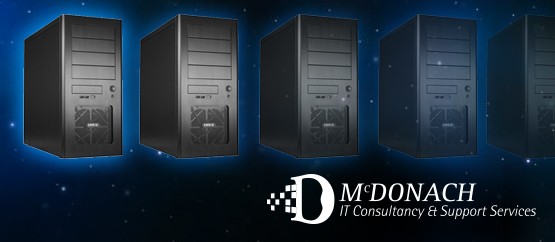Virtualisation
At McDonach Consultancy & Support Services our team of highly experienced engineers are amongst the leading exponents of virtualisation strategies. These diverse strategies are characterised as follows:
Server Virtualisation
Server Virtualisation enables different operating systems and applications to run, in safety and isolation, concurrently on the same physical hardware. The virtualisation software layer (ESX Server, Citrix Xen Server) allows operating systems and applications to be consolidated and run on a mix of hardware, and to move operating virtual servers between host physical servers on-the-fly. The virtual servers can be managed as if hosted on a single, standardised hardware platform.
Storage Virtualisation Storage
Virtualisation is the process of pooling physical storage from multiple devices into what appears to be a device, which can then be managed from a central console. Storage virtualisation is commonly used in Storage Area Networks (SANs) such as the LeftHand Networks NSM 4150. Storage virtualisation helps the administrator perform backups, archiving, and recovery more easily, and efficiently, by disguising the actual complexity of the SAN.
Desktop Virtualisation
Desktop Virtualisation allows the hosting of multiple virtual desktop environments on a single server. In effect this allows users to access their desktops remotely through a thin client application such as Citrix Presentation Server or VMware’s VDI technology.
Application Virtualisation: Application virtualisation is the practice of running software from a remote server rather than on the user’s computer. This offers considerable flexibility in terms of software deployment on the desktop because the application need not be installed locally, but can be accessed and run using the servers resources.
About mcdonach-it-consultancy

